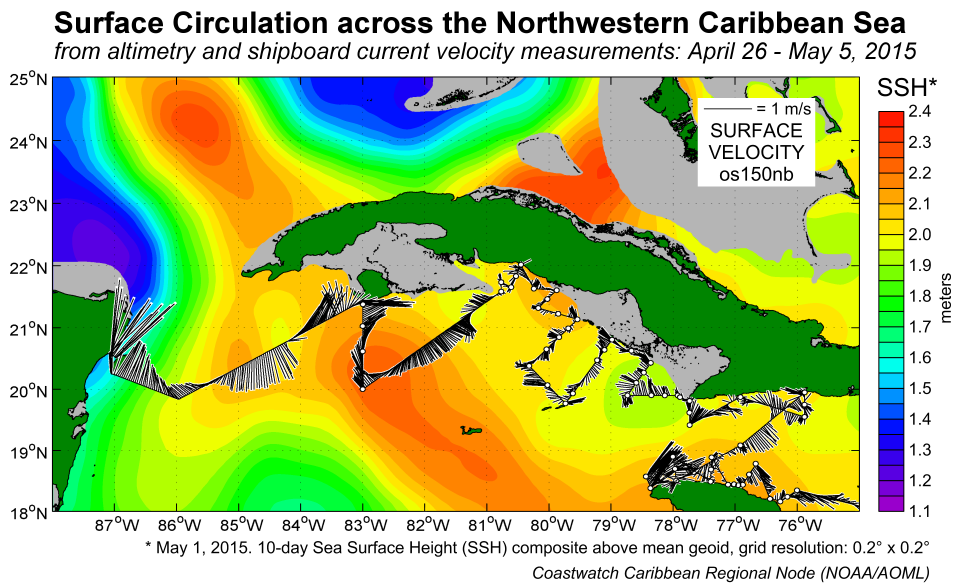NOAA Researchers from AOML's Physical Oceanography Division and the Southeast Fisheries Science Center's (SEFSC) Early Life History Lab (ELH) present preliminary work from a collaborative research cruise to an international audience in Havana, Cuba
In November, Ryan Smith (AOML/PhOD), John Lamkin, Trika Gerard, Estrella Malca, Sarah Privoznik, Aras Zygas, Leif Rasmuson, and Kathryn Shulzitski (SEFSC/ELH) presented preliminary results from a collaborative NOAA research cruise at the 10th Congress on Marine Science (MarCuba'2015) held in Havana, Cuba.
The oceanographic survey was conducted aboard the NOAA Ship Nancy Foster from mid April to early June 2015 across portions of the northern Caribbean, the Southern Gulf of Mexico, and the Florida Straits. Over the past 10 years, in a cross-line-office partnership, researchers from the two Miami NOAA labs (Libby Johns and Ryan Smith from AOML, and John Lamkin and Trika Gerard from SEFSC) have conducted multiple interdisciplinary cruises focused on fisheries oceanography across the Intra-Americas Sea region. In 2015, the NOAA-led cruise also included international scientific collaborators from Mexico, Spain, and Jamaica.
The first half of the survey focused on the Virgin Islands coastal shelf ecosystem in the northeastern Caribbean. Data collected is providing insight into the processes that drive spawning aggregations of economically important reef fish species in the region and enhancing our understanding of the spatial variation in the supply of settlement-stage fishes between managed and non-managed areas of the coastal shelf.
Following work in the Virgin Islands, the cruise track extended westward across the northern Caribbean into the waters surrounding Cuba. The biological focus for the second half of the trip shifted from larval reef fish to larval Atlantic Bluefin Tuna. The measurements and samples collected during this portion of the survey are providing species abundance and distribution data, and are helping to improve tuna stock assessments for the western Caribbean Sea and Gulf of Mexico. The results are also being used to further develop a regional larval habitat model for Atlantic Bluefin Tuna.
The preliminary physical and biological findings from the survey were discussed during a special session on Intra-Americas Sea connectivity at the MarCuba'2015 conference. NOAA scientists presented an analysis of the regional ocean circulation at the time of the cruise, utilizing shipboard, satellite, and drifter data, as well as presentations on the measured spatial distribution and abundance of several economically important pelagic and reef-associated species prevalent across the Intra-Americas Sea region (talks focused on tunas, billfish, parrotfish, and lobster).

Figure Caption: A 10-day composite of sea surface height, overlaid with surface current velocity vectors from hull-mounted acoustic Doppler current profiler (ADCP) measurements, is shown above for April 26 through May 5, 2015. Velocity vectors are show in black along the NOAA Ship Nancy Foster NF-15-02/03 cruise track for the period. Over the western portion of the map, meso-scale eddy circulation and dominant current systems (Yucatan, Loop, and Florida) are prevalent, while the surface conditions offshore southeastern Cuba are characterized by lower velocity small-scale eddy circulation.